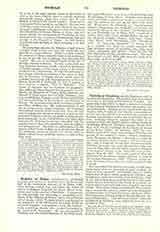

Nicholas of Strasburg, mystic, flourished early in the fourteenth century. Educated at Paris, he was later on lector at the Dominican convent, Cologne. Appointed by John XXII, he made a canonical visitation of the German Dominican province, where great discord prevailed. Relying on two papal briefs dated August 1, 1325, it appears that the sole commission received from the pontiff was to reform the province in its head and members, and to act as visitor to the sisters. Nicholas, however, assumed the office of inquisitor as well, and closed a process already begun by Archbishop Heinrich (Cologne) against Master Eckhart, O.P., for his teachings on mysticism, in favor of the latter (1326). In January, 1327, the archbishop renewed the cause and arraigned Nicholas as a patron of his confrere’s errors. Almost simultaneously, Hermann von Hochst, a discontented religious on whom Nicholas had imposed a well-merited penalty, took revenge by having him excommunicated. Nicholas, however, was soon released from this sentence by Pope John, that he might appear as definitor at the general chapter of his order convened at Perpignan, May 31, 1327. He is last heard of after the settlement of the process against Eckhart as vicar of the German Dominicans, 1329. Thirteen extant sermons show him to have been of a rather practical turn of mind.
Having realized the inherent necessity of solid piety being based upon the principles of sound theology, he urges in clear, pregnant, and forceful style the sacred importance of good works, penitential practices and indulgences, confession and the Holy Eucharist. Only by the use of these means can the love of God be well-regulated and that perfect conversion of the heart attained which is indispensable for a complete remission of guilt. Built up on so firm a groundwork, there is nothing to censure but much to commend in his allegorical interpretations of Sacred Scripture, which are otherwise consistent with his fondness for parable and animated illustration. “De Adventu Christi”, formerly attributed to Nicholas, came originally from the pen of John of Paris.
THOMAS A K. REILLY

